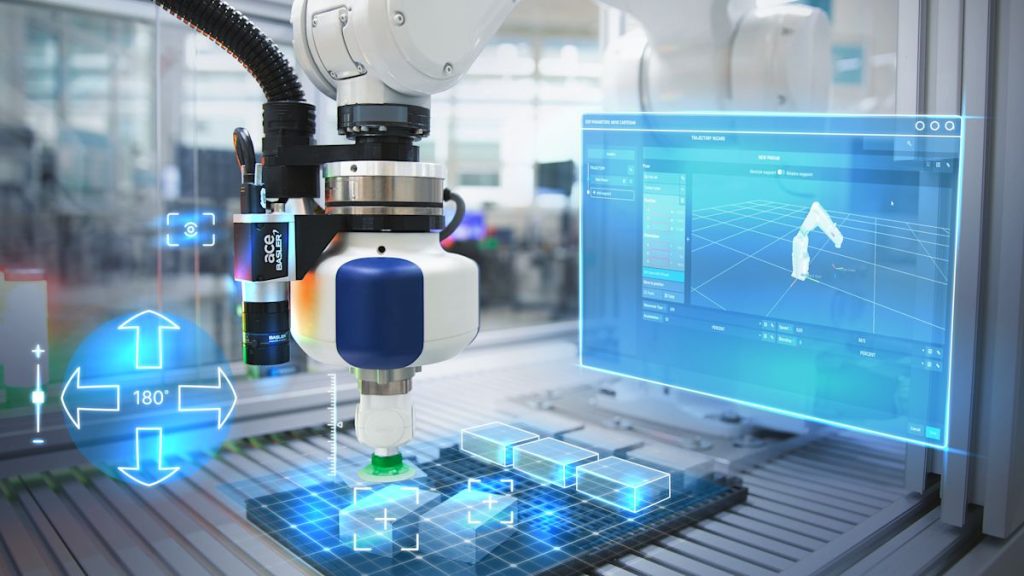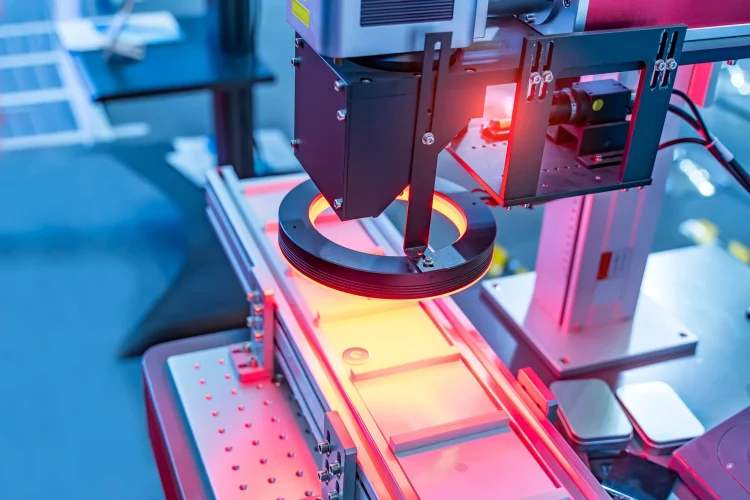Introduction
In the rapidly advancing field of robotics, the ability to perceive and interpret the environment is essential for robots to perform complex tasks. While traditional industrial robots were often limited to pre-programmed actions within controlled environments, modern robots are increasingly required to operate autonomously in dynamic, unstructured settings. The development of machine vision and perception technologies is fundamental to achieving this level of autonomy. These technologies enable robots to “see” and understand their surroundings, allowing them to make informed decisions, navigate environments, interact with objects, and collaborate with humans.
Machine vision, combined with other perception technologies such as LIDAR (Light Detection and Ranging), infrared sensors, and depth cameras, has unlocked new capabilities for robots. These capabilities are pivotal for industries ranging from manufacturing and logistics to healthcare and autonomous vehicles. This article explores the role of machine vision and perception technologies in robotics, the underlying technologies and algorithms, their applications, challenges, and the future of robotic perception systems.
The Importance of Vision in Robotics
The concept of robot vision refers to a robot’s ability to capture, process, and interpret visual information from its environment. Just as human vision enables us to interact effectively with the world, machine vision enables robots to perceive their environment and respond accordingly. Without vision, a robot would be effectively blind, unable to recognize objects, detect obstacles, or assess its surroundings for task completion.
Vision is essential in enabling robots to perform the following tasks:
- Object Recognition: The ability to identify and locate objects in the robot’s environment is crucial for tasks like assembly, sorting, or packaging.
- Navigation and Mapping: Robots need to understand their position in space, avoid obstacles, and navigate complex environments autonomously.
- Human-Robot Interaction: Perception technologies allow robots to interact with humans safely, understanding gestures, facial expressions, and even voice commands.
- Task Execution: Many tasks, such as quality inspection, require the robot to visually assess objects to ensure they meet predefined criteria, such as shape, size, or color.
Key Components of Robot Vision and Perception
To enable robots to “see” and “understand” their environment, various components of vision and perception technologies are integrated into the system. These components can be broadly categorized into hardware and software elements.
1. Hardware Components
- Cameras: Cameras are the primary hardware used for robot vision. These may include:
- RGB Cameras: Standard cameras that capture visible light, providing color images similar to what humans see.
- Stereo Cameras: These use two cameras to capture depth information and create 3D images by mimicking human binocular vision.
- Depth Cameras: Using infrared or time-of-flight technology, these cameras can capture depth information and create 3D maps of the environment.
- LIDAR: LIDAR systems use laser beams to measure distances by analyzing the time it takes for the light to return to the sensor. This allows robots to create detailed 3D maps of their environment, detect objects, and avoid obstacles.
- Infrared Sensors: These sensors measure heat emitted from objects and can help robots detect living beings or navigate in low-light environments.
- Ultrasonic Sensors: Used for detecting proximity, these sensors are often employed in robot navigation systems, particularly for avoiding obstacles.
2. Software Components
While hardware captures the raw data, software processes and interprets that data to help the robot understand its surroundings. The key software components include:
- Computer Vision Algorithms: These algorithms are used to process and analyze visual data from cameras and sensors. Key tasks include object detection, feature recognition, image segmentation, and 3D reconstruction.
- Object Detection and Recognition: Object detection involves identifying specific objects within an image or video feed. This can be achieved through machine learning models that are trained to recognize various objects based on their shape, color, or texture.
- Image Segmentation: Segmentation divides an image into regions or objects, which is critical for object tracking, mapping, or manipulation tasks.
- Optical Flow and Motion Detection: Robots can track objects in motion by analyzing the changes in image sequences over time, enabling them to follow moving objects or avoid moving obstacles.
- Machine Learning and AI: Artificial intelligence, particularly deep learning, plays a significant role in improving perception accuracy. By using large datasets, AI models can learn to recognize patterns, objects, and environments with high precision. This is especially important for tasks such as facial recognition, autonomous driving, and robotic surgery.
- Simultaneous Localization and Mapping (SLAM): SLAM is a technique that allows robots to build a map of an unknown environment while simultaneously keeping track of their position within it. This is especially important for autonomous robots operating in dynamic, unstructured environments.
Types of Perception Technologies in Robotics
In addition to vision systems, a variety of complementary perception technologies enhance robot capabilities:
1. LIDAR and Radar
LIDAR and radar are complementary technologies to machine vision, used primarily for autonomous navigation and mapping. These sensors allow robots to perceive their surroundings in 3D, detecting obstacles and mapping environments with great precision.
- LIDAR: While LIDAR excels in providing highly accurate distance measurements, it is particularly useful in environments with lots of static or moving obstacles. LIDAR creates detailed 3D maps that help robots navigate complex terrains.
- Radar: Radar systems are particularly beneficial for robots operating in low visibility conditions, such as fog, rain, or darkness. Radar can detect large objects at a distance and is often used in autonomous vehicles for collision avoidance.
2. Infrared (IR) Sensors
Infrared sensors capture heat signatures from objects or people in the environment, enabling robots to detect temperature variations and identify living beings. This can be used for security applications, night navigation, or detecting heat anomalies in industrial machinery.
3. Depth Sensors and Time-of-Flight Cameras
Depth sensors measure the distance from the robot to objects in the environment. Time-of-flight (ToF) cameras send light pulses and measure the time taken for the pulses to return, which helps in creating 3D models of the environment. These technologies are crucial for robot navigation, object manipulation, and even quality inspection.

Applications of Machine Vision and Perception Technologies
Machine vision and perception technologies have a broad range of applications across various industries. By providing robots with the ability to “see,” these technologies enable robots to interact effectively with the environment, perform complex tasks, and operate autonomously.
1. Industrial Automation and Manufacturing
Machine vision plays a vital role in industrial automation, particularly in quality control, assembly, and material handling. Robots equipped with vision systems can inspect products for defects, guide assembly operations, or sort items on production lines.
- Example: In electronics manufacturing, vision systems can be used to inspect PCBs (printed circuit boards) for faults or verify the correct placement of components.
2. Autonomous Vehicles
One of the most high-profile applications of machine vision and perception is in autonomous vehicles. Self-driving cars rely heavily on vision systems to interpret their surroundings, detect pedestrians, other vehicles, road signs, and obstacles, and navigate safely.
- Example: Autonomous vehicles use LIDAR, cameras, and radar to build a 360-degree view of their environment, enabling them to make real-time decisions for navigation, parking, and avoiding collisions.
3. Healthcare and Surgery
In healthcare, robotic surgery systems rely on vision technologies to assist surgeons in performing precise and minimally invasive procedures. Robotic systems can provide real-time imaging, including 3D visualizations, to guide the surgeon during operations.
- Example: Robotic surgery systems like the da Vinci Surgical System use high-definition cameras and 3D vision to allow surgeons to perform operations with enhanced accuracy and less disruption to surrounding tissue.
4. Agriculture and Farming
Robots in agriculture rely on machine vision for tasks such as crop monitoring, harvesting, and planting. Vision systems help robots detect ripe crops, assess plant health, and navigate through fields.
- Example: Agricultural robots use machine vision to monitor plant growth, detect weeds, and even harvest crops like tomatoes or strawberries based on their color and ripeness.
5. Robotic Assistance and Human Interaction
Machine vision is also used in robots designed to interact with humans, such as service robots, companion robots, and industrial cobots (collaborative robots). These robots can detect and respond to human gestures, facial expressions, and other cues, making them more intuitive and efficient.
- Example: Service robots in public spaces, like airports or shopping malls, use machine vision to recognize humans and understand their gestures, enabling interaction such as directing people or answering questions.
Challenges in Machine Vision and Perception for Robots
Despite the significant advancements in vision and perception technologies, several challenges remain:
1. Environmental Complexity
Robots often operate in dynamic, unstructured environments, where conditions change constantly. Lighting variations, object occlusion, and unexpected movements can complicate visual perception, making it difficult for robots to maintain accuracy in real-time tasks.
2. Real-Time Processing
Vision and perception systems require significant computational power to process large amounts of data quickly. In tasks requiring real-time decision-making, such as autonomous navigation, low-latency processing is crucial, which can place a heavy load on robot hardware.
3. Sensor Fusion
Combining data from multiple sensors (e.g., cameras, LIDAR, infrared) into a unified perception model is challenging. Proper sensor fusion requires complex algorithms to ensure that the robot can accurately interpret its environment based on various data sources.
4. Cost and Complexity
High-performance machine vision systems can be costly, particularly when using advanced sensors like LIDAR or high-definition cameras. The complexity of integrating these systems into robots requires specialized knowledge and expertise.
The Future of Robot Vision and Perception Technologies
The future of robot vision and perception is incredibly promising, driven by continued advancements in AI, deep learning, and sensor technologies. Some of the anticipated trends include:
- Improved Deep Learning Models: As deep learning algorithms continue to evolve, robots will be able to learn from vast amounts of visual data, improving their ability to recognize objects, navigate environments, and make decisions autonomously.
- Enhanced Sensor Capabilities: Advances in sensors, including smaller, cheaper, and more powerful vision sensors, will enable robots to perceive their environments with even greater detail and accuracy.
- Smarter, More Intuitive Human-Robot Interaction: As robots become better at interpreting human actions and intentions through vision and perception, the interaction between robots and humans will become more natural and seamless.
Conclusion
Machine vision and perception technologies are the backbone of modern robotics, enabling robots to understand, navigate, and interact with their environment. These technologies are unlocking new capabilities, from autonomous vehicles to industrial robots, and paving the way for robots to work alongside humans in more intuitive and efficient ways. As these systems continue to improve, robots will become increasingly capable of performing complex tasks, driving further innovation across multiple industries. However, challenges in environmental adaptation, real-time processing, and sensor fusion remain and will require ongoing research and development to overcome. Nevertheless, the future of robotic perception holds immense potential to transform industries and everyday life.







































